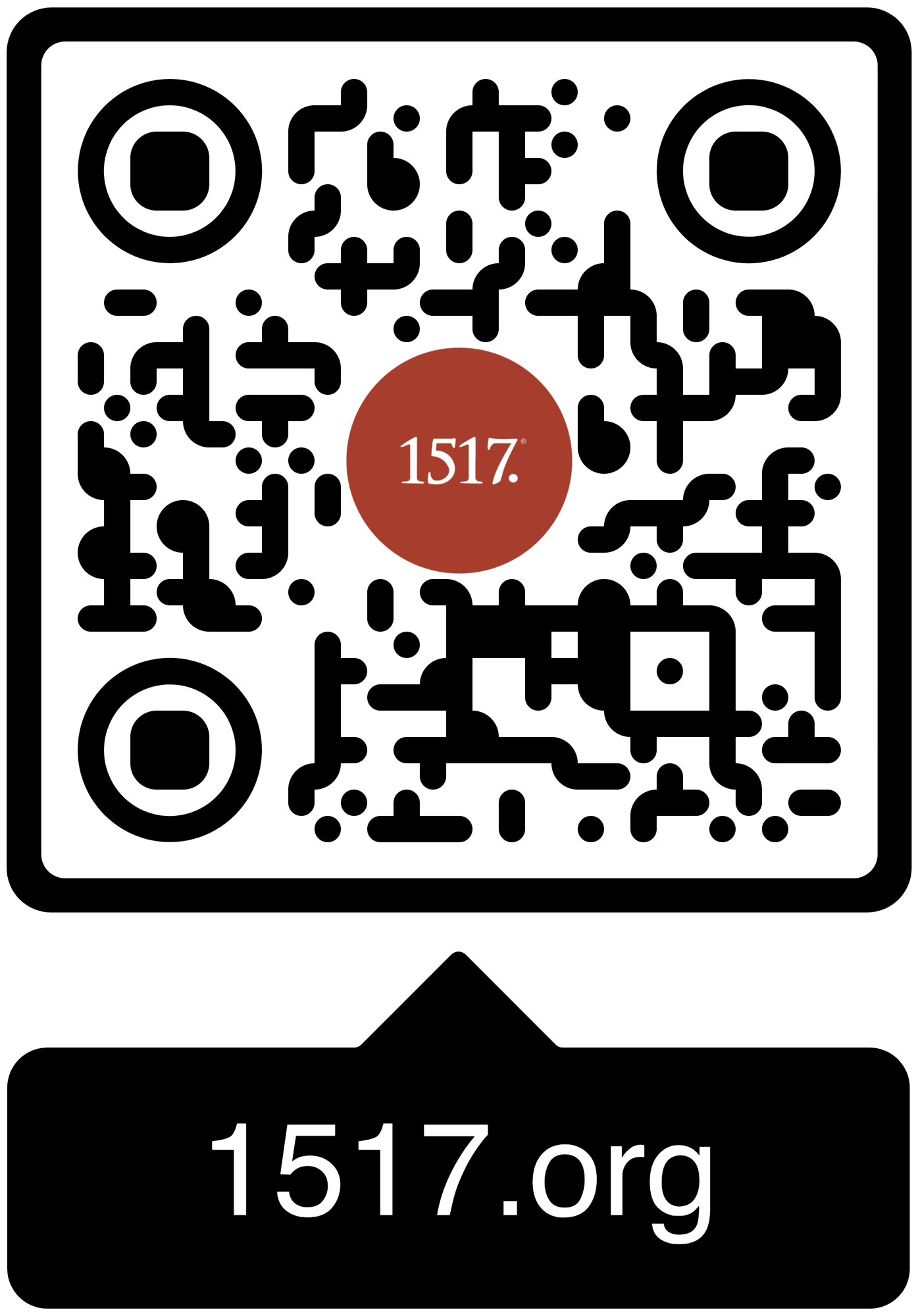The way of the cross is the actual way of victory. Jesus absorbs the worst of what humanity and even the devil can do to him, and he spurns the shame of it all.
07/16/25
The IRS says churches can endorse candidates from the pulpit. But just because they can doesn’t mean they should.
07/15/25
Chapter 3 of Habakkuk, which is often referred to as “the Psalm of Habakkuk,” is a song of catharsis, relief, faith, and profound emotion.
All Articles
Author
- All Authors
- 1517 Publishing
- 1517 Staff
- A. A. Just Jr.
- A.J. Vega
- Aaron Boerst
- Adam Francisco
- Adam Stetson
- Amy Mantravadi
- Andrew Foss
- Anthony DiLiberto
- Blake Flattley
- Bob Hiller
- Bob Sundquist
- Bonnie Petroschuk
- Brad Soenksen
- Bradley Gray
- Brandon Hanson
- Brandon Pangman
- Brennan Manning
- Brian W. Thomas
- Bror Erickson
- Bruce Hillman
- C.S. Lewis
- Caleb Keith
- Chad Bird
- Charles E. Fry
- Christopher J. Richmann
- Cindy Koch
- CJ Armstrong
- Craig Donofrio
- Dan Chrismer
- Dan van Voorhis
- Dan Weber
- Daniel Deen
- Daniel Emery Price
- Daniel Stenberg
- David Clay
- David Rufner
- David Schmitt
- Delwyn Campbell
- Dominick Santore
- Donavon Riley
- Edward Killian
- Elyse Fitzpatrick
- Erick Sorensen
- Gage Jordan
- Gerhard Forde
- Grant Klembara
- Greg Koukl
- Gretchen Ronnevik
- Haroldo Camacho
- Hermann Sasse
- Jacob Corzine
- Jacob Smith
- Jake Allstaedt
- Jared C. Wilson
- Jason Lane
- Jason Lang
- Jason Oakland
- Jay Sawrie
- Jeff Mallinson
- Jeffrey Pulse
- Jenifer Mohan
- Jessica Delgado
- Jessica Thompson
- Jim Nestingen
- Joel Fitzpatrick
- Joel Hess
- Joey Goodall
- John Bombaro
- John Bortulin
- John Chrysostom
- John T. Pless
- John W. Hoyum
- John Warwick Montgomery
- Jonathan Ruehs
- Jordan Spina
- Joshua Miller
- Justin Rossow
- Karen Stenberg
- Kathy Morales
- Katie Koplin
- Kelsi Klembara
- Ken Sundet Jones
- Kerri Tom
- Kevin Hale
- Kevin McClain
- Kyle G. Jones
- Larry D. Hughes
- Laura Bauer
- Luke Kjolhaug
- Magnus Persson
- Mariah Coward
- Mark Jasa
- Mark Mattes
- Mark Pierson
- Martin Luther
- Matt Johnson
- Matt Kroelinger
- Matt Popovits
- Michael Berg
- Michael Gibney
- Nicholas Hopman
- Nicholas Kallis
- Norman Nagel
- Paul Dunk
- Paul Koch
- Pete Lange
- Peter Nafzger
- Philip Bartelt
- Preston Sprinkle
- Raleigh Sadler
- Rick Ritchie
- RJ Grunewald
- Robert Farrar Capon
- Robert Kolb
- Rod Rosenbladt
- Roland Ehlke
- Ron Hodel
- Ryan Couch
- Ryan Matthias
- Ryan Stevenson-Cosgrove
- Ryan Tinetti
- Sam Leanza Ortiz
- Sam P. Schuldheisz
- Sarah Crowder
- Scott Davis
- Scott Keith
- Scott Landrum
- Seth Moorman
- Steve Byrnes
- Steve Kruschel
- Steven A. Hein
- Steven Paulson
- StoryMakers NYC
- Tanner Olson
- Tate Barber
- Ted Rosenbladt
- Travis Scholl
- Tyler Cronkright
- Uwe Siemon-Netto
- Valerie Thur
- Wade Johnston
- Walter Hwang
- Wayne Sender
- Zack James Cole
12/26/18
Advent is one big answer to the question of free will in matters of salvation. God is free. Our will is bound.
12/24/18
The celebration of He who came in humility, who would upend the Kingdoms of this world, was eclipsed by men grasping at the power of each other’s supposed kingdoms.
12/23/18
Christmas wrecks all attempts to penetrate God's hiddenness and seek him out in Heaven. He comes to us clothed in our humanity.
12/23/18
But here we are again on the other side of a Christmas celebration. This inevitably involves a sense of let-down, even for preachers (Warning: Do not check the attendance numbers this coming Sunday). If Christmas is as significant as we say, it is worth reflecting with your hearers on what comes next. What is on the other side of Christmas?
12/19/18
Jesus has a mighty weapon which is the weapon of His warfare, the sword of His mouth, the very Word of God.
12/16/18
No doubt a few preachers cringe at the thought of "C and E" (Christmas and Easter) Christians showing up for Christmas Eve services...I must confess, when I preach on Christmas and Easter, I do not share this sentiment held by some of my peers.
12/16/18
Lutheran pastors have at least three sermons in these three days. The calendar allows preachers to wed together some important themes this Christmas. The Magnificat (conception), the birth account from Matthew 1, and the fuller account of Christ’s birth from Luke 2 give clear shape to the proclamation for the Feast of the Nativity. The Epistle readings, however, should also be considered as the Holy Spirit’s interpretation of the nativity.
12/16/18
It is the day before Christmas Eve. The trappings have taken their toll. Despite your valiant attempts to hold the Advent line, members of your congregation (and perhaps you, too) have grown weary of the Christmas season. One of the primary culprits, of course, is the ubiquitous Christmas playlist.
12/09/18
Past, present, fututre converge in Advent. The historical coming of the Lord Jesus in the flesh, born of Mary to suffer and die for the world's redemption is indicated by having the Palm Suday account read on the First Sunday in Advent. All of the church year revolves around the cross.
12/09/18
We enter into the brief respite of the penitential season of Advent with the call “Gaudate!” The theme of rejoicing appears beautifully in our Epistle and in the Old Testament from Zephaniah.
12/09/18
It is a question that emerges from deep inside. It comes from mounting fears, nagging doubts, and unsettling uncertainties. It is the question asked by one who can no longer pretend that things will work out nicely and neatly. All thinking Christians face this question at some point, but few have the courage to give it voice.
12/05/18
Luther’s theology lets the believer in Christ dwell under the cerulean sky of God’s unchanging grace.
1517 is a Christian non-profit (501(c)3) multi-media organization. Our mission is to declare and defend the Good News that we are forgiven and free on account of the death and resurrection of Jesus alone.





1517 grants permission for our free online resources to be printed, photocopied, and otherwise used freely for private and church use. We require that authorship and source (1517.org) are referenced and maintained. These resources may not be sold or included in any publications for sale.


